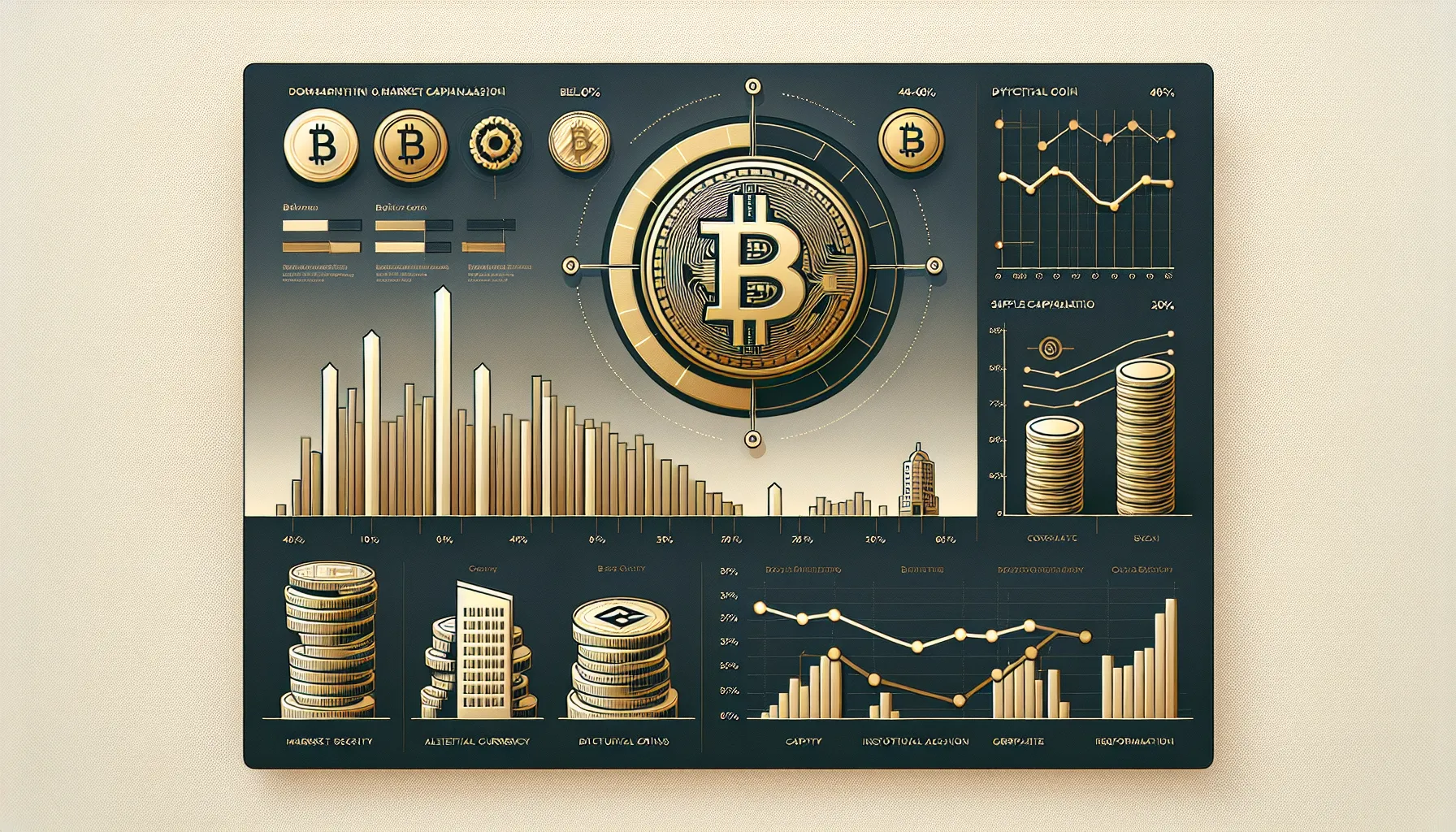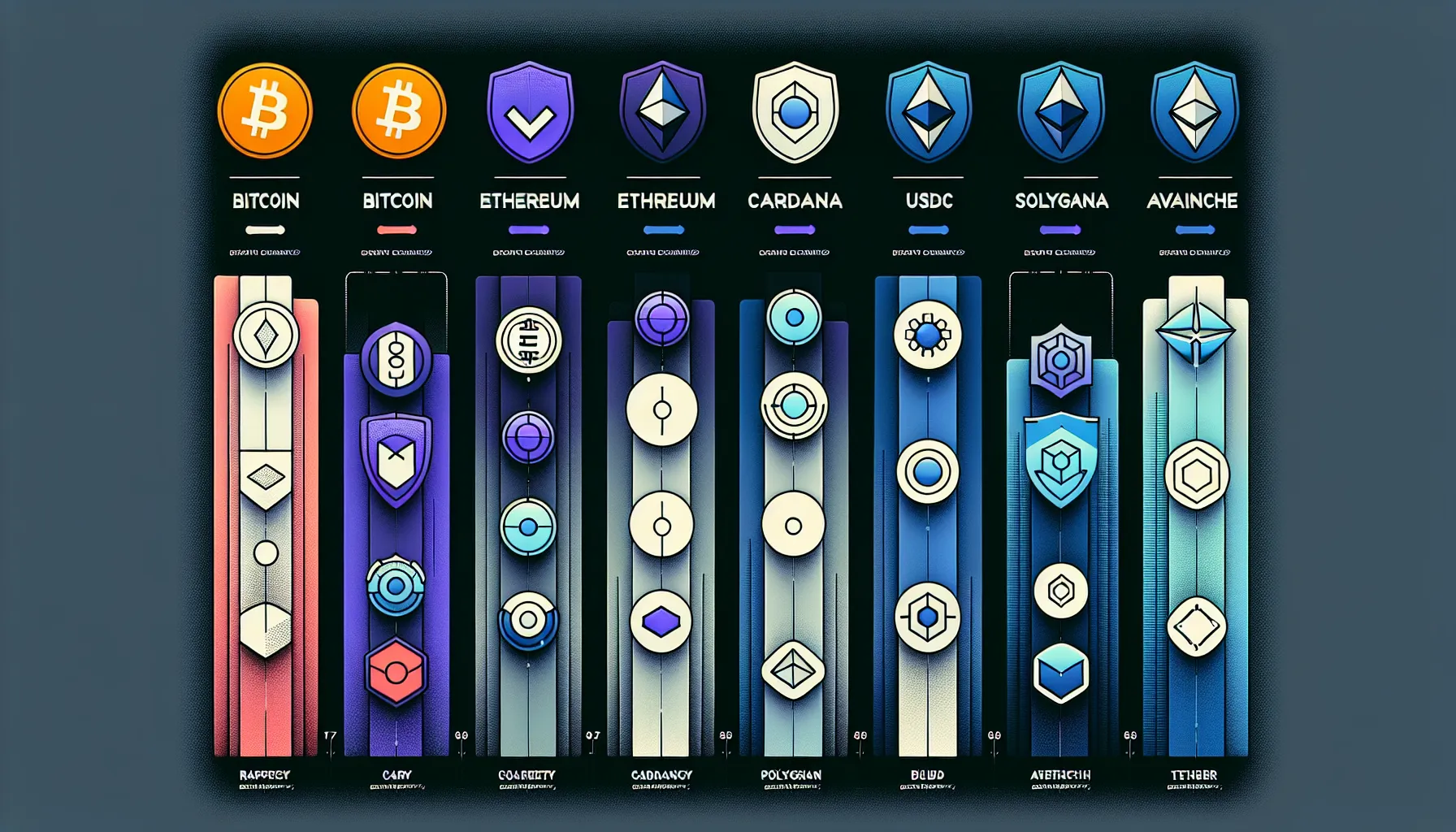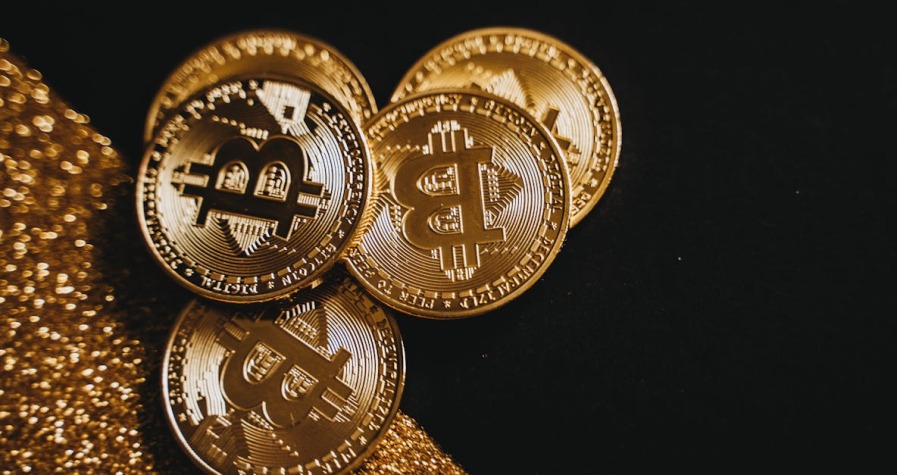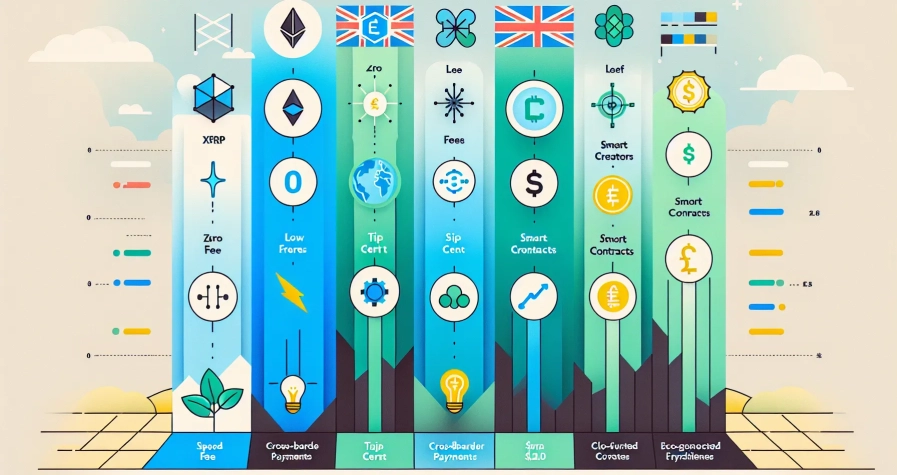When cryptocurrency markets turn turbulent, even experienced investors find themselves searching for safer harbours. Market volatility in the crypto space isn’t just common, it’s practically expected. Yet amidst the dramatic price swings and panic-selling, certain digital assets have consistently demonstrated greater resilience and stability than others.
Understanding which cryptocurrencies to hold during market downturns can mean the difference between weathering the storm and watching one’s portfolio evaporate. Whilst no cryptocurrency is entirely immune to market forces, some possess fundamental characteristics, strong networks, institutional backing, proven use cases, or inherent stability mechanisms, that make them considerably safer bets when uncertainty strikes.
This article examines nine of the safest cryptocurrencies to hold during periods of market volatility. From established giants like Bitcoin to regulated stablecoins and innovative blockchain platforms, these digital assets offer various forms of protection against the sector’s notorious price fluctuations. Each has earned its place through different attributes: some through sheer market dominance, others through technological innovation or regulatory compliance.
Key Takeaways
- Bitcoin remains the safest crypto during market volatility due to its unparalleled network security, massive liquidity, and institutional backing.
- Ethereum’s fundamental utility as the infrastructure for DeFi and smart contracts creates consistent demand regardless of market sentiment.
- Regulated stablecoins like USDC provide transparent, asset-backed stability for preserving capital during extreme market downturns.
- Layer 2 solutions such as Polygon and innovative platforms like Avalanche offer growth potential backed by real technological advancement and enterprise adoption.
- Diversifying across established assets like Bitcoin and Ethereum alongside stablecoins and promising altcoins provides the strongest foundation for weathering cryptocurrency market volatility.
- The safest cryptos to hold share common characteristics: strong fundamentals, proven utility beyond speculation, institutional adoption, and resilience across multiple market cycles.
1. Bitcoin (BTC): The Digital Gold Standard

Bitcoin remains the undisputed king of cryptocurrencies, and for good reason. As the first and most established digital currency, Bitcoin has weathered every major market cycle since its inception in 2009. Its position as the safest crypto during volatility stems from several fundamental advantages that no other cryptocurrency can match.
Why Bitcoin Remains the Safest Bet
Bitcoin’s safety profile during turbulent markets rests on its unparalleled network security, massive liquidity, and universal recognition. With the largest market capitalisation of any cryptocurrency, typically representing 40-60% of the entire crypto market cap, Bitcoin serves as the sector’s reserve currency. When investors flee riskier altcoins during market downturns, they often rotate capital into Bitcoin first before potentially exiting to fiat currencies.
The Bitcoin network’s hash rate (computational power securing the blockchain) has grown exponentially over the years, making it virtually impossible to attack. This security, combined with its fixed supply of 21 million coins, creates digital scarcity that many investors compare to gold. Unlike central bank-issued currencies that can be printed at will, Bitcoin’s programmatic scarcity provides a hedge against inflation and monetary uncertainty.
Institutional adoption has further cemented Bitcoin’s position as the safest cryptocurrency. Major corporations, investment funds, and even nation-states have added Bitcoin to their balance sheets, providing a stabilising force that wasn’t present in earlier market cycles. This institutional interest brings sophisticated capital and longer time horizons, reducing the extreme volatility that characterised Bitcoin’s early years.
Historical Performance During Downturns
Bitcoin’s track record during market stress periods demonstrates its relative stability. During the 2018 crypto winter, when many altcoins lost 90-99% of their value, Bitcoin’s decline, whilst significant, was considerably less severe. Similarly, during the March 2020 COVID-19 market crash, Bitcoin recovered faster than most traditional assets and virtually all other cryptocurrencies.
Data from multiple market cycles shows that Bitcoin typically experiences smaller percentage drawdowns than the broader altcoin market. Whilst it’s not immune to volatility, Bitcoin can still experience 30-50% corrections, it has consistently demonstrated the ability to recover and reach new all-time highs over longer time periods. This resilience makes it the foundational holding for any volatility-conscious crypto portfolio.
2. Ethereum (ETH): The Foundation of DeFi
Ethereum holds the position as the second-safest cryptocurrency, not merely because of its market cap, but due to its fundamental utility as the infrastructure layer for decentralised finance (DeFi), non-fungible tokens (NFTs), and thousands of decentralised applications.
Utility Beyond Price Speculation
Unlike many cryptocurrencies that serve primarily as speculative assets, Ethereum functions as the fuel for an entire ecosystem of financial applications. Every transaction on the Ethereum network, every smart contract execution, and every DeFi protocol interaction requires ETH for gas fees. This creates consistent demand regardless of market sentiment, a crucial stabilising factor during volatility.
The transition to Ethereum 2.0 and proof-of-stake consensus has fundamentally altered Ethereum’s economic model. Staking mechanisms now lock significant portions of the ETH supply, reducing selling pressure during market downturns. Also, the EIP-1559 upgrade introduced a fee-burning mechanism that makes ETH deflationary during periods of high network activity, providing a counterbalance to inflationary pressures.
Ethereum’s developer community, the largest in the blockchain space, continuously builds and improves the network. This innovation pipeline ensures Ethereum remains at the forefront of blockchain technology, adapting to challenges and maintaining relevance across market cycles.
Institutional Adoption and Network Effects
Institutional interest in Ethereum has surged as traditional finance recognises its potential for tokenising real-world assets, automating financial processes through smart contracts, and enabling new financial products. Major financial institutions, including JPMorgan and Goldman Sachs, have explored Ethereum-based solutions, lending credibility and stability to the platform.
Ethereum’s network effects create a protective moat during market volatility. With hundreds of billions of pounds locked in DeFi protocols built on Ethereum, and countless projects dependent on its infrastructure, the ecosystem has reached a critical mass that makes it resilient to market swings. When investors seek safety in crypto, Ethereum’s proven utility and established ecosystem make it a natural haven alongside Bitcoin.
3. Binance Coin (BNB): Exchange-Backed Stability
Binance Coin represents a unique category of cryptocurrency safety: tokens backed by the operations and success of major crypto exchanges. As the native token of the world’s largest cryptocurrency exchange by trading volume, BNB benefits from direct utility and consistent demand tied to Binance’s extensive ecosystem.
BNB holders receive substantial benefits on the Binance platform, including reduced trading fees, a feature that becomes particularly valuable during volatile periods when trading volumes spike. This utility creates inherent demand that provides a floor of support even when speculative interest wanes. Unlike purely speculative tokens, BNB serves a functional purpose that generates consistent usage regardless of market direction.
Ecosystem Growth and Use Cases
The BNB Chain (formerly Binance Smart Chain) has evolved into a significant blockchain platform hosting thousands of decentralised applications. This expansion beyond the exchange itself diversifies BNB’s value proposition, making it less dependent on Binance’s centralised operations. The chain’s lower fees and faster transactions compared to Ethereum have attracted substantial developer activity and user adoption.
Binance’s quarterly coin burn mechanism, which reduces BNB’s total supply based on trading volumes, creates deflationary pressure that supports price stability. The exchange has committed to burning coins until 50% of the total supply is eliminated, providing long-term tokenomics that appeal to investors seeking assets with decreasing supply.
But, investors should note that BNB’s safety profile carries some centralisation risk. As Binance faces regulatory scrutiny in various jurisdictions, BNB’s price can be affected by news concerning the exchange. Even though this, the token’s strong fundamentals, consistent utility, and the exchange’s dominant market position have historically provided resilience during broader market downturns.
4. USD Coin (USDC): Regulated Stablecoin Security
When discussing safe cryptocurrencies during volatility, stablecoins occupy a special category. USD Coin stands out as one of the most secure stablecoin options, offering a 1:1 peg to the US dollar with transparency and regulatory compliance that exceeds most competitors.
USDC is issued by Circle, a company that has positioned itself as a leader in regulated cryptocurrency services. Each USDC token is backed by equivalent US dollar reserves or short-duration US Treasury securities, providing the stability that traders and investors seek when exiting volatile positions. Unlike algorithmic stablecoins that maintain their peg through complex mechanisms that can fail under stress, USDC’s asset-backed model offers straightforward security.
Transparency and Regulatory Compliance
What distinguishes USDC from other stablecoins is its commitment to transparency and regulatory frameworks. Circle publishes monthly attestation reports from major accounting firms, verifying that its reserves match the circulating supply of USDC. This level of transparency addresses the trust issues that have plagued other stablecoins and reduces counterparty risk for holders.
Circle has actively sought regulatory clarity, positioning USDC to thrive in an increasingly regulated environment. As governments worldwide develop frameworks for digital assets, USDC’s proactive compliance approach may provide significant advantages over competitors operating in regulatory grey areas.
During market volatility, USDC serves as a crucial on-ramp and off-ramp between volatile cryptocurrencies and stable value. Traders can quickly move capital into USDC to preserve purchasing power without leaving the crypto ecosystem entirely, a functionality that becomes invaluable during rapid market movements. The stablecoin’s deep liquidity across numerous exchanges and DeFi protocols ensures that conversions can happen efficiently even during extreme market stress.
5. Cardano (ADA): Research-Driven Resilience
Cardano takes a distinctly different approach to blockchain development, one rooted in academic research and peer-reviewed methodology. This scientific foundation has cultivated a reputation for stability and long-term thinking that appeals to investors seeking cryptocurrencies with staying power through market cycles.
Founded by Ethereum co-founder Charles Hoskinson, Cardano progresses deliberately through carefully planned development phases. Each upgrade undergoes extensive testing and peer review before implementation, reducing the risk of critical bugs or network failures that have plagued more hastily developed blockchains. This conservative approach may result in slower feature rollouts, but it builds confidence in the network’s reliability.
Academic Approach to Blockchain Development
Cardano’s research-first methodology involves collaboration with universities and research institutions worldwide. The project’s development is guided by formal methods, mathematical techniques used in safety-critical systems like aerospace and medical devices. This rigorous approach to protocol design creates a blockchain that prioritises security and correctness over speed to market.
The Cardano ecosystem has steadily matured, with smart contract functionality, native tokens, and a growing DeFi ecosystem now operational. Whilst Cardano’s DeFi landscape is smaller than Ethereum’s, its growth trajectory and the quality of projects building on the platform suggest long-term viability that transcends short-term market sentiment.
Cardano’s proof-of-stake consensus mechanism, Ouroboros, is energy-efficient and designed for scalability, positioning the network well for long-term sustainability. The protocol’s ability to process transactions cheaply and efficiently without environmental concerns appeals to institutional investors increasingly focused on ESG considerations.
During market downturns, Cardano has demonstrated relative stability compared to many altcoins, supported by a loyal community and consistent development progress. Whilst ADA experiences volatility, its strong fundamentals and methodical approach to blockchain innovation provide a measure of safety for investors with longer time horizons.
6. Solana (SOL): High-Performance Infrastructure
Solana has emerged as one of the highest-performance blockchain platforms, capable of processing thousands of transactions per second with minimal fees. This technical capability has attracted significant developer activity and positioned Solana as a serious Ethereum competitor, particularly for applications requiring high throughput.
The Solana ecosystem experienced explosive growth, hosting successful projects across DeFi, NFTs, and Web3 applications. This diverse ecosystem creates multiple sources of demand for SOL tokens, which are required for transaction fees and staking. The breadth of activity on Solana provides stability through diversification, the network isn’t dependent on a single use case or application.
Recovery from Past Network Issues
Solana faced significant challenges, including multiple network outages that raised questions about its reliability. But, the network’s response to these issues demonstrates important aspects of its safety profile. Development teams identified root causes, implemented fixes, and improved network stability over time. This ability to address problems and emerge stronger is a crucial characteristic for long-term viability.
The FTX collapse in late 2022 particularly impacted Solana, as the exchange and its affiliated trading firm were major supporters of the ecosystem. SOL’s price dropped dramatically, and many questioned the network’s future. Yet Solana’s recovery from this existential threat demonstrates remarkable resilience. Developer activity remained robust, new projects continued launching, and institutional interest gradually returned.
Solana’s technical advantages, particularly its speed and low costs, address real limitations in competing blockchains. As scalability becomes increasingly important for blockchain adoption, Solana’s architecture positions it well for long-term relevance. Institutional investors have recognised this potential, with major firms maintaining or rebuilding positions in SOL even though past challenges.
Whilst Solana carries more risk than Bitcoin or Ethereum, its proven ability to weather severe challenges, combined with strong fundamentals and technical capabilities, earns it a place among safer crypto holdings for those with appropriate risk tolerance.
7. Polygon (MATIC): Ethereum’s Scaling Solution
Polygon has established itself as the leading Layer 2 scaling solution for Ethereum, addressing the network’s congestion and high fee issues without requiring users to leave the Ethereum ecosystem. This strategic positioning creates a safety profile based on complementing rather than competing with the world’s second-largest blockchain.
As Ethereum’s transaction fees spike during periods of high activity, Polygon provides an affordable alternative that maintains compatibility with Ethereum’s vast ecosystem of applications. Users can bridge assets to Polygon, conduct transactions for fractions of a penny, and return to Ethereum mainnet when needed. This functionality has made Polygon the scaling solution of choice for numerous major projects and institutions.
Strategic Partnerships and Enterprise Adoption
Polygon’s safety profile is significantly enhanced by its impressive roster of partnerships and enterprise adoption. Major brands including Starbucks, Adobe, and Meta have built on Polygon, bringing mainstream legitimacy to the platform. These partnerships create long-term demand for the network and its MATIC token, providing stability beyond purely speculative interest.
The platform’s commitment to supporting Ethereum rather than attempting to replace it creates a symbiotic relationship that benefits both networks. As Ethereum succeeds, demand for scaling solutions grows, directly benefiting Polygon. This alignment of interests provides a measure of safety, Polygon’s success isn’t predicated on Ethereum’s failure, but rather on its continued growth and adoption.
Polygon has also expanded beyond simple Layer 2 scaling to encompass a broader vision of interconnected blockchain networks. The development of Polygon zkEVM and other zero-knowledge proof technologies positions the platform at the forefront of blockchain scaling innovation. This technological evolution ensures Polygon remains relevant as the industry advances.
During market volatility, Polygon’s established ecosystem, major partnerships, and critical role in the Ethereum infrastructure provide stability. Whilst MATIC certainly experiences price fluctuations, the token’s fundamental utility and the network’s adoption by serious enterprises create a floor of support that purely speculative cryptocurrencies lack.
8. Avalanche (AVAX): Fast and Secure Consensus
Avalanche has distinguished itself through a unique consensus mechanism that achieves remarkable speed, security, and decentralisation simultaneously, characteristics that typically involve trade-offs in blockchain design. This technical foundation has enabled Avalanche to build a robust ecosystem whilst maintaining the performance characteristics necessary for mainstream adoption.
The Avalanche platform processes transactions in under two seconds with finality, meaning confirmed transactions cannot be reversed. This speed and certainty appeal to both developers building applications and institutional users requiring reliable transaction settlement. The platform’s architecture supports the creation of custom blockchains (subnets) with their own rules and validators, providing flexibility that few competing platforms offer.
Institutional Interest and Subnet Technology
Avalanche’s subnet technology has attracted significant institutional attention, as it allows organisations to create customised blockchain networks that maintain interoperability with the broader Avalanche ecosystem. Financial institutions, in particular, have explored subnets for use cases requiring regulatory compliance and privacy whilst still benefiting from blockchain technology’s advantages.
The platform has secured notable partnerships with traditional finance institutions and enterprises seeking blockchain solutions. Deloitte, for example, has used Avalanche technology for disaster recovery solutions, demonstrating real-world utility beyond cryptocurrency speculation. These partnerships provide credibility and stability, particularly during market downturns when projects lacking fundamental utility struggle.
Avalanche’s multi-chain architecture, which separates different blockchain functions (exchange, contracts, and platforms) into specialised chains, creates efficiency and scalability advantages. This thoughtful design addresses many bottlenecks that plague monolithic blockchain architectures, positioning Avalanche for long-term viability as adoption grows.
The AVAX token serves multiple purposes within the ecosystem: paying transaction fees, staking for network security, and serving as the basic unit of account for creating subnets. This multi-faceted utility creates diverse demand sources that provide resilience during volatile markets. Whilst Avalanche remains more volatile than larger-cap cryptocurrencies like Bitcoin and Ethereum, its strong fundamentals, institutional interest, and innovative technology make it a relatively safer option within the altcoin space.
9. Tether (USDT): The Most Liquid Stablecoin
Tether holds the position as the largest stablecoin by market capitalisation and trading volume, providing liquidity that no other stablecoin approaches. During market volatility, this liquidity becomes Tether’s greatest asset, traders can move in and out of USDT positions instantly, even during the most turbulent market conditions.
USDT serves as the primary trading pair on countless cryptocurrency exchanges worldwide, making it the de facto base currency for crypto trading. This ubiquity means that holding Tether provides immediate access to virtually any cryptocurrency market without the delay of fiat currency conversions. During rapid market movements, this accessibility is invaluable.
Market Liquidity During Crisis Periods
Tether’s dominance becomes most apparent during market crises. When panic selling occurs, USDT’s deep liquidity pools and universal availability allow traders to exit positions quickly without significant slippage. This liquidity has been tested repeatedly during flash crashes and market panics, with Tether consistently maintaining its peg and functionality.
But, Tether carries controversies that investors should understand. The company has faced regulatory scrutiny and questions about its reserve transparency. Unlike USDC, which publishes regular attestation reports, Tether’s reserve composition and auditing practices have been less transparent, creating periodic concerns that can affect its peg during extreme stress.
Even though these concerns, Tether has maintained its dollar peg through multiple market cycles and crisis periods, including events that caused other stablecoins to fail. The company has gradually improved transparency, publishing reserve breakdowns that show backing primarily through cash equivalents and short-term deposits.
For investors navigating market volatility, Tether’s unmatched liquidity often outweighs its transparency concerns, particularly for shorter-term holdings. The ability to quickly convert volatile assets to stable value and back again makes USDT an essential tool for managing portfolio risk during uncertain periods. Whilst longer-term holders might prefer USDC’s regulatory clarity, Tether’s liquidity advantages make it indispensable during active market volatility.
Conclusion
Navigating cryptocurrency market volatility requires both strategy and the right assets in one’s portfolio. The nine cryptocurrencies examined here each offer different forms of protection against market turbulence, from Bitcoin’s established dominance and Ethereum’s fundamental utility to the stability of regulated stablecoins like USDC and the liquidity of Tether.
No cryptocurrency is entirely safe, the market’s inherent volatility affects all digital assets to varying degrees. But, these nine have demonstrated resilience through multiple market cycles, possess strong fundamentals, and serve genuine utility beyond pure speculation. Bitcoin and Ethereum form the foundation of any volatility-conscious portfolio, providing the most established safety within the crypto space. Stablecoins like USDC and USDT offer havens for preserving capital during extreme downturns, whilst innovative platforms like Cardano, Solana, Polygon, and Avalanche provide growth potential backed by real technological advancement and adoption.
Binance Coin’s unique position as an exchange token tied to the world’s largest trading platform creates a different type of stability, though one more centralised than other options on this list. Each cryptocurrency’s safety profile reflects distinct characteristics, market dominance, regulatory compliance, technological innovation, institutional adoption, or inherent stability mechanisms.
Investors should consider diversifying across several of these safer options rather than concentrating holdings in a single asset. A balanced approach might include Bitcoin and Ethereum as core holdings, one or both stablecoins for liquidity and capital preservation, and smaller allocations to promising platforms like Cardano, Polygon, or Avalanche based on individual risk tolerance and conviction.
Eventually, the safest approach to cryptocurrency investing during volatile periods combines holding resilient assets with sound risk management principles: avoiding excessive leverage, maintaining appropriate portfolio diversification, and investing only capital one can afford to have at risk. These nine cryptocurrencies provide the strongest foundation for weathering market storms, but they work best as part of a broader, disciplined investment strategy.
Frequently Asked Questions
What are the safest cryptos to hold during market volatility?
Bitcoin and Ethereum are the safest foundations, offering established dominance and utility. Stablecoins like USDC and USDT preserve capital during downturns, whilst platforms like Cardano, Solana, Polygon, and Avalanche provide growth potential with strong fundamentals and real-world adoption.
Why is Bitcoin considered the safest cryptocurrency during market downturns?
Bitcoin’s unparalleled network security, largest market capitalisation, and universal recognition make it the safest crypto. Its fixed supply of 21 million coins creates digital scarcity, whilst institutional adoption and proven recovery across multiple market cycles demonstrate resilience during volatility.
How do stablecoins help protect against crypto market volatility?
Stablecoins like USDC and USDT maintain a 1:1 peg to the US dollar, allowing investors to preserve capital during price swings without leaving the crypto ecosystem. Their deep liquidity enables quick conversions during market stress, effectively protecting purchasing power.
What makes Ethereum a safe crypto investment during turbulent markets?
Ethereum’s fundamental utility as infrastructure for DeFi, NFTs, and decentralised applications creates consistent demand beyond speculation. Its proof-of-stake model, fee-burning mechanism, largest developer community, and institutional adoption provide stability during market volatility.
Can you lose money holding stablecoins like USDC during crypto crashes?
Whilst stablecoins aim to maintain a 1:1 dollar peg, risks include issuer insolvency, regulatory actions, or de-pegging events. USDC’s asset-backed reserves, regulatory compliance, and monthly attestation reports minimise these risks compared to algorithmic stablecoins.
Should I diversify across multiple cryptocurrencies during volatile periods?
Yes, diversification across Bitcoin, Ethereum, stablecoins, and established platforms reduces risk. A balanced approach might include core holdings in BTC and ETH, stablecoins for liquidity, and smaller allocations to innovative platforms based on risk tolerance and market conditions.









